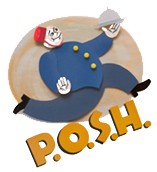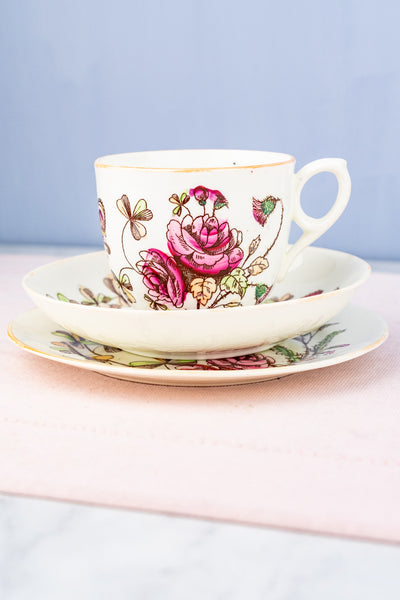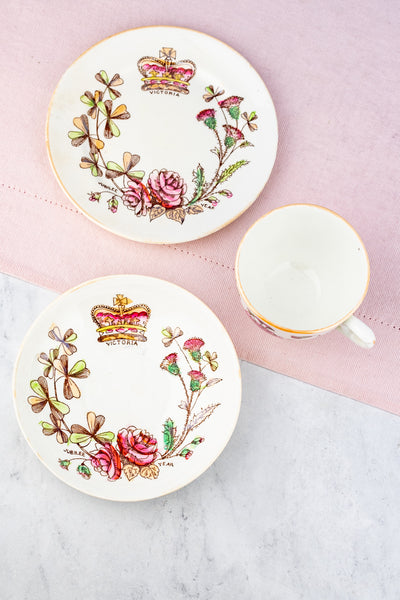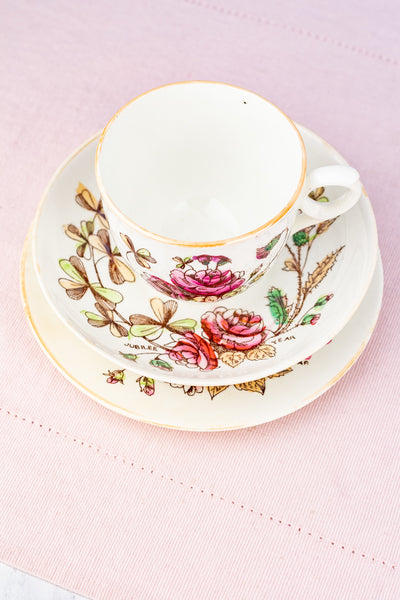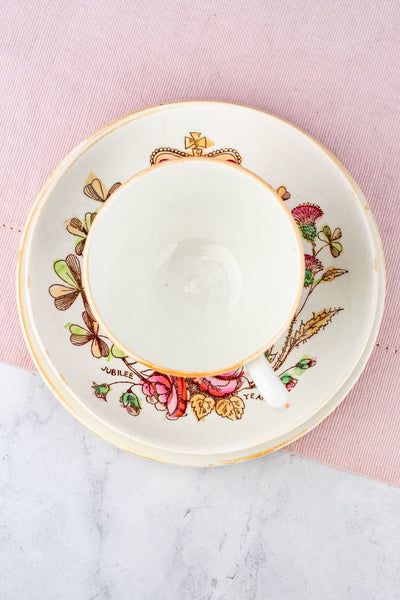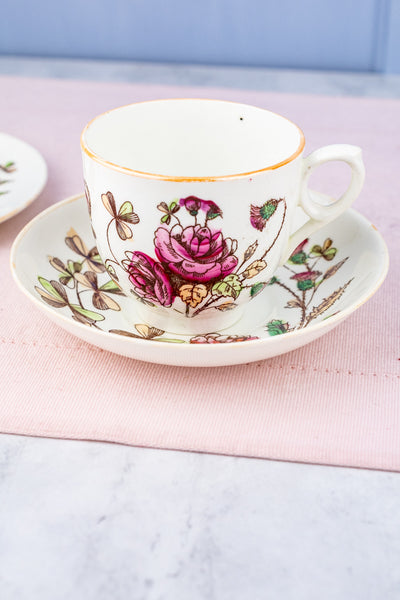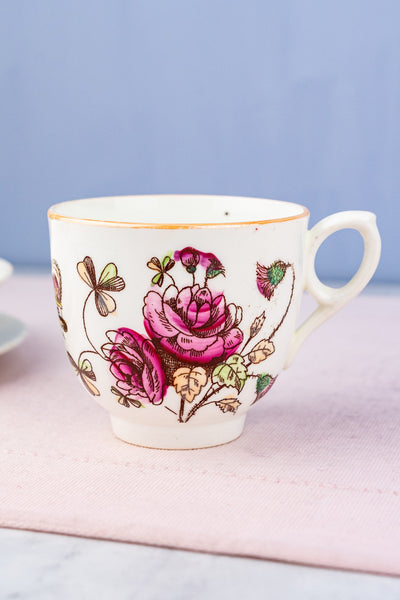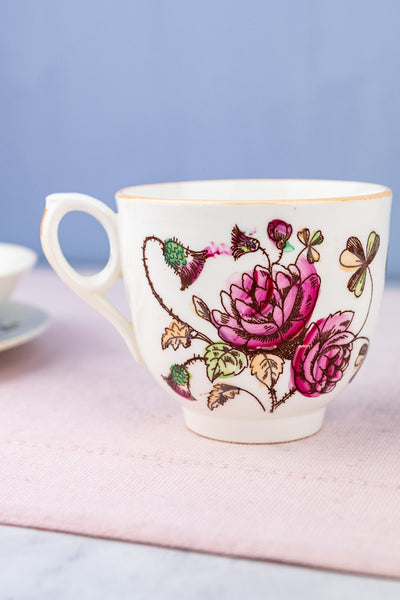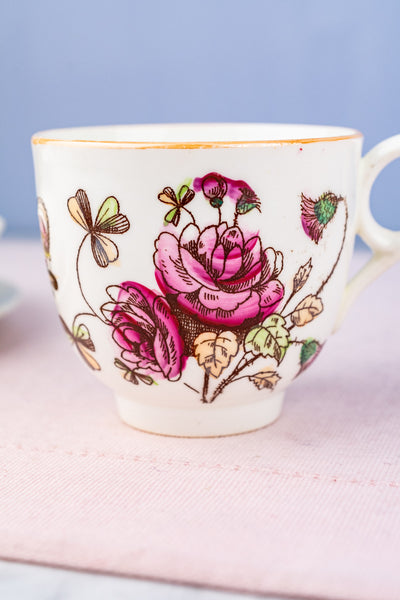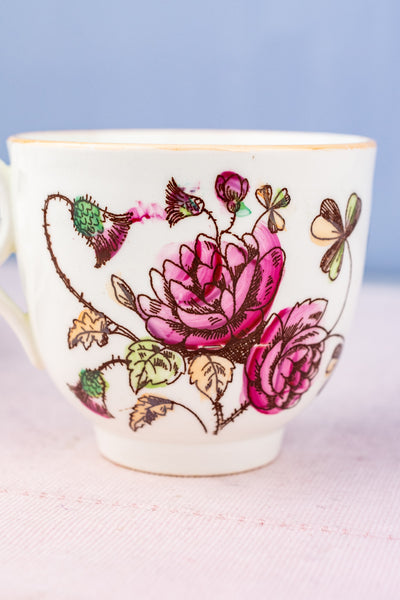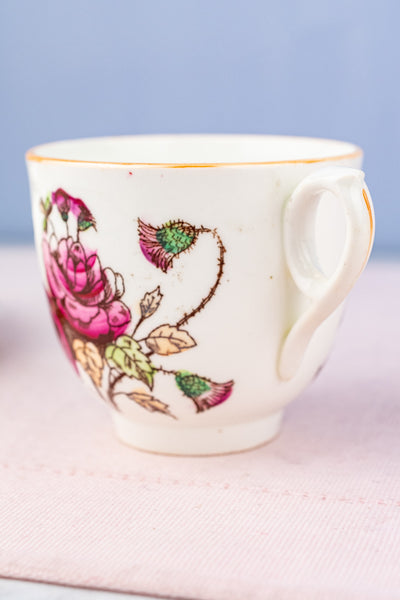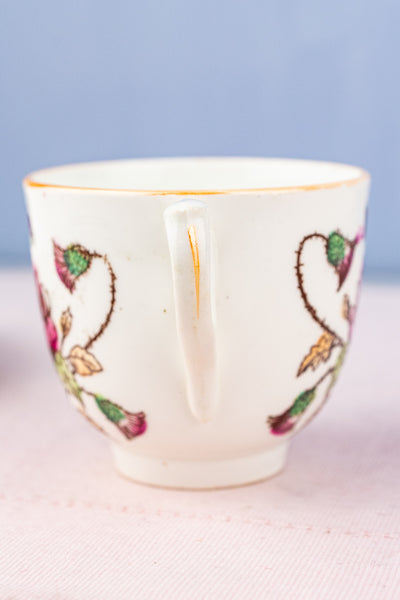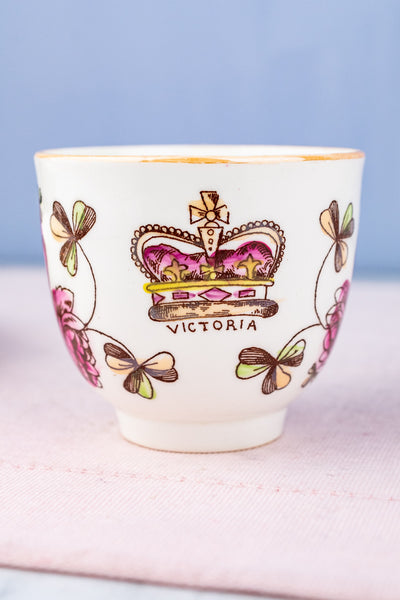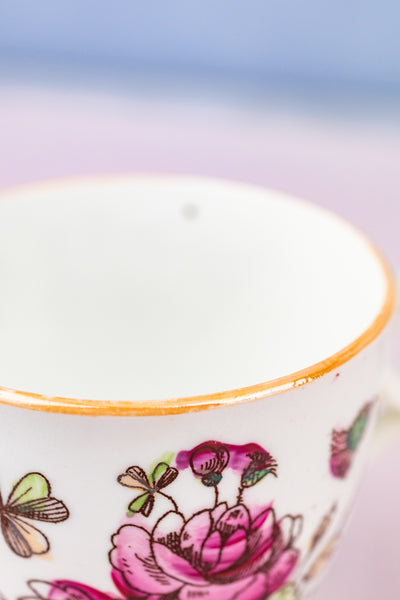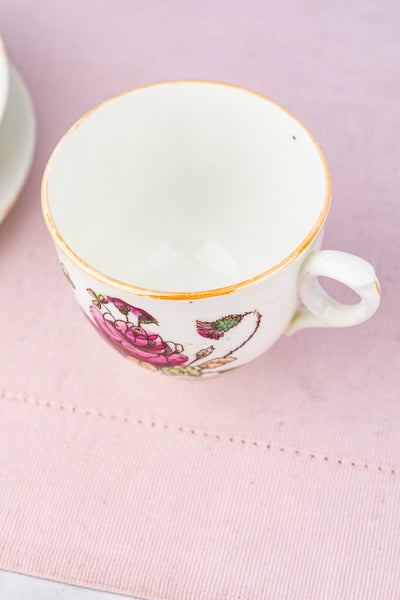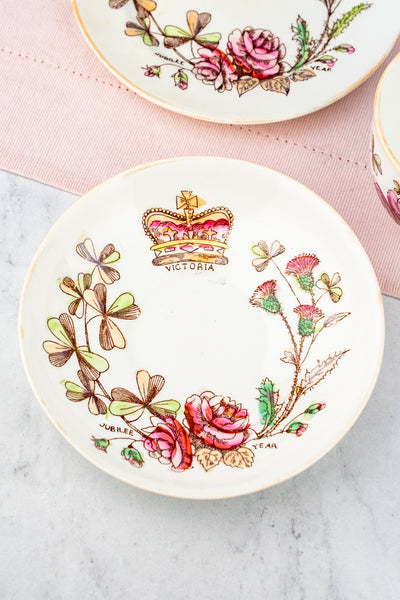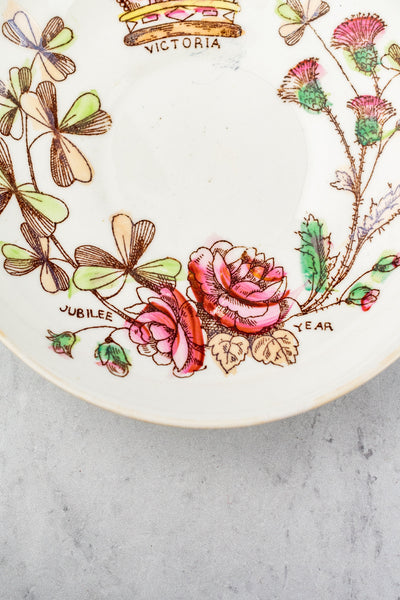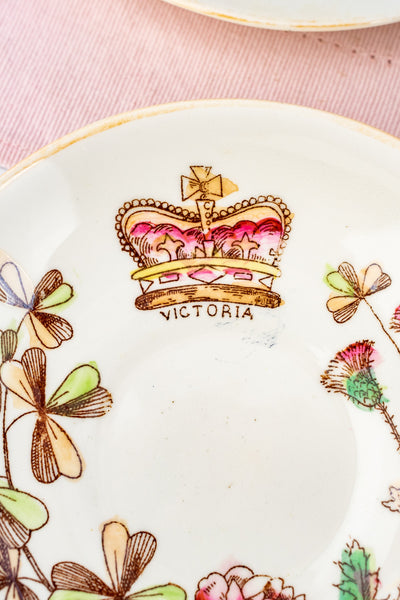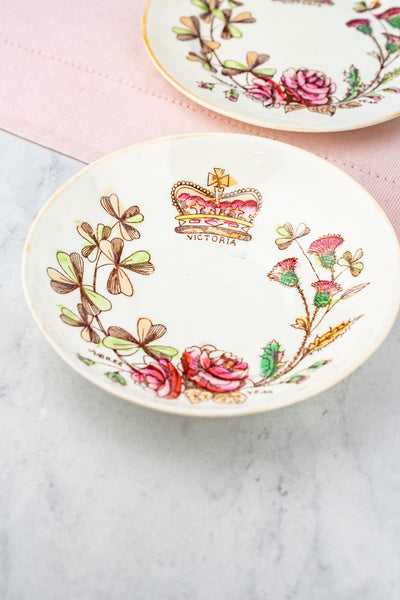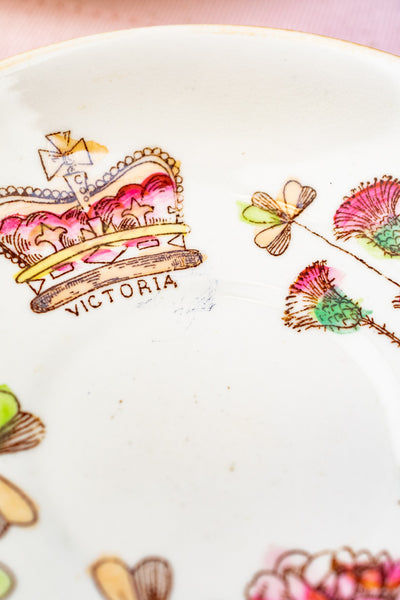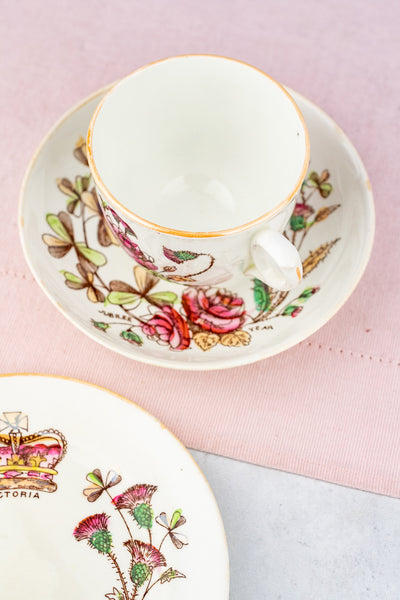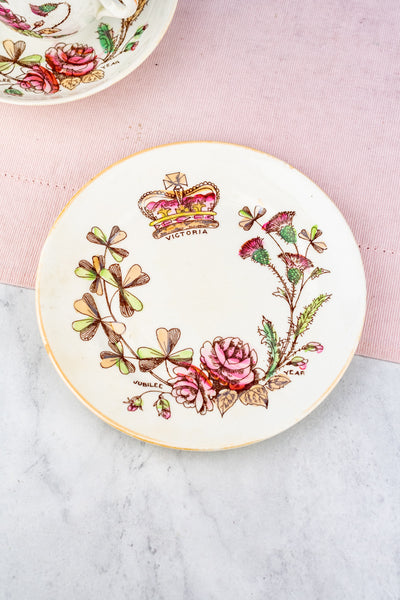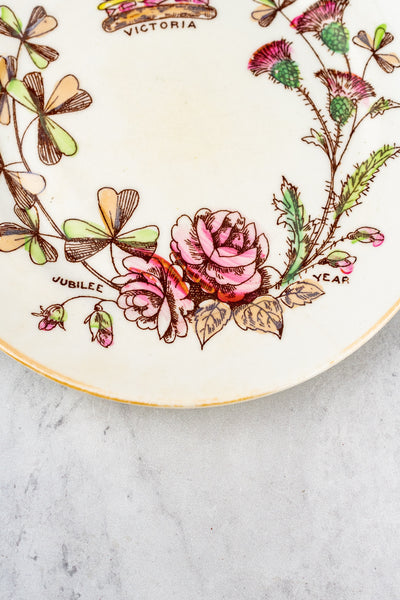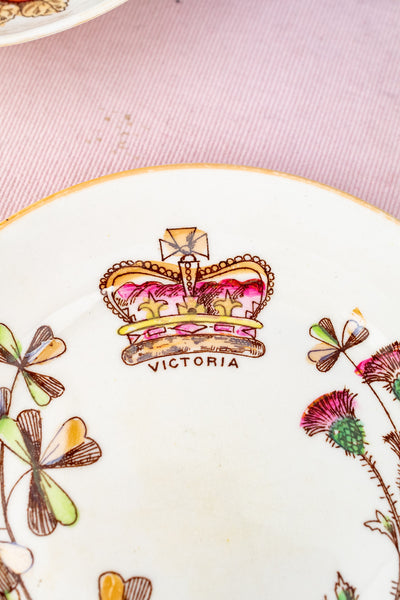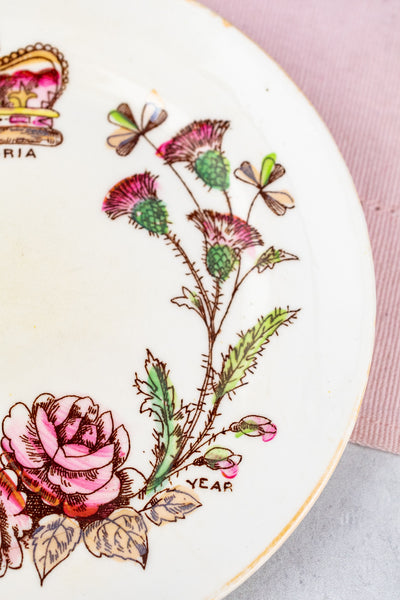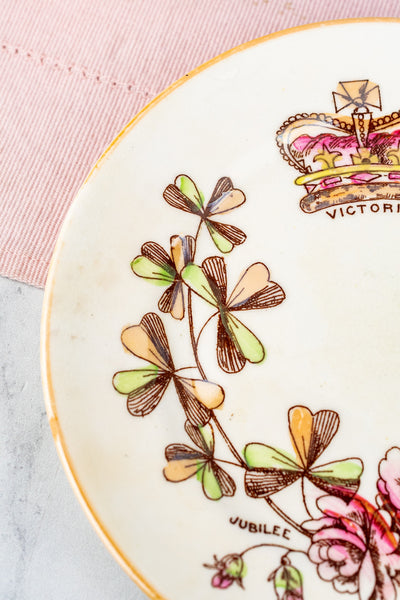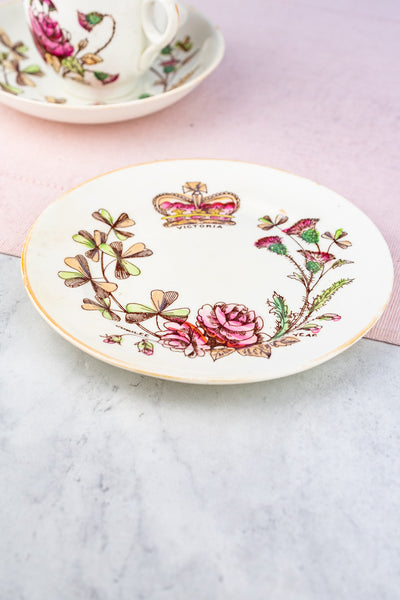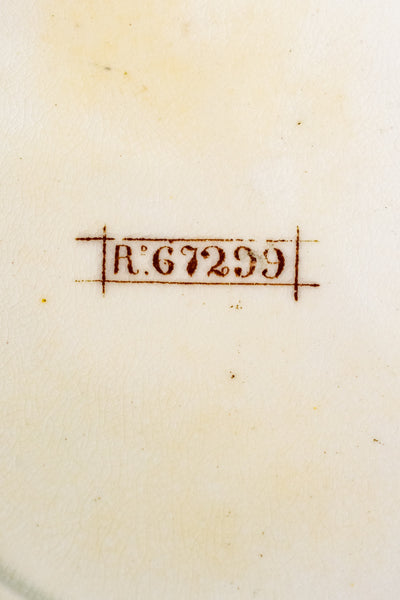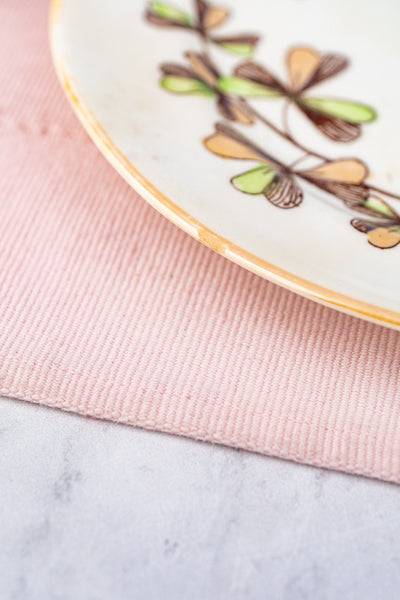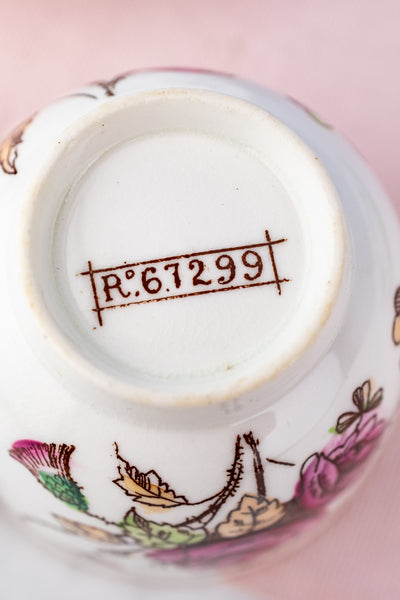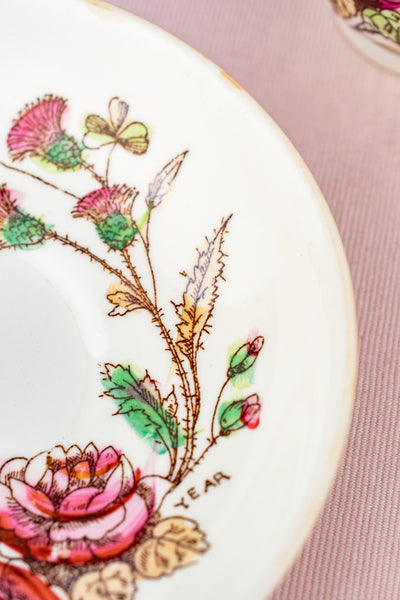Antique Queen Victoria Jubilee Trio
Antique Queen Victoria Jubilee Trio
$125.00
Produced to commemorate the Jubilee of Queen Victoria more than 100 years ago, this lushly decorative trio captures all the romance and regal splendor of the iconic monarch's reign. Each piece of the set was painted entirely by hand in a cheerful palette of bright pink, soft coral, sunny yellow, and vibrant shades of green. Embellished with the Coronation Crown, along with English roses, Scottish thistles and Irish clovers, the botanicals appear to lovely advantage against the crisp white background that gently gleams.
Highlighted by shining gilt around the perimeter of the cup, saucer and plate, and along the graceful handle, each piece features the name 'Victoria' with the phrase 'Jubilee Year' adorning the saucer and plate. A rare find from England, this quintessentially cottage-chic trio looks as fresh today as it did during Queen Victoria's Jubilee Year. At once lovely and majestic, it promises to become a crowning highlight within your royal memorabilia collection.
Strictly one-of-a-kind and subject to prior sale. In very good antique condition. Cup measures 2.75"H x 4.5"W. Saucer measures 5.5"D. Plate measures 6"D.
Learn More About Queen Victoria
Queen Victoria was the monarch of the United Kingdom of Great Britain and Ireland from June 20, 1837 until her death on January 22, 1901. From May 1, 1876, she used the additional title of Empress of India.
Victoria was born on May 24, 1819 and was the daughter of Prince Edward, the fourth son of King George III. Both her father and the King died in 1820, and Victoria was raised under close supervision by her very strict German-born mother Princess Victoria of Saxe-Coburg-Saalfeld. On June 20, 1837, Victoria's uncle King William IV died at the age of 71, and at the very young age of 18, Victoria became Queen. In her diary she wrote, "I was awoke at 6 o'clock by Mamma, who told me the Archbishop of Canterbury and Lord Conyngham were here and wished to see me. I got out of bed and went into my sitting-room (only in my dressing gown) and alone, and saw them. Lord Conyngham then acquainted me that my poor Uncle, the King, was no more, and had expired at 12 minutes past 2 this morning, and consequently that I am Queen."
The United Kingdom was already an established constitutional monarchy, in which the Sovereign held relatively few direct political powers. Privately, Victoria attempted to influence government policy and ministerial appointments. Publicly, she became a national icon, and was identified with strict standards of personal morality.
Victoria married her first cousin, Prince Albert of Saxe-Coburg and Gotha, in 1840. Their nine children all married into royal and noble families across the continent, tying them together and earning her the nickname "the grandmother of Europe". After Albert's death in 1861, Victoria plunged into deep mourning, wore black for the remainder of her life and avoided public appearances. She rarely set foot in London in the following years and her seclusion earned her the name "widow of Windsor". As a result of her seclusion, the monarchy lost favor with many British citizens, but in the latter half of her reign, her popularity recovered.
The 50th anniversary of her reign, her Golden Jubilee, was a time of public celebration. On June 20, 1887, Queen Victoria began her Golden Jubilee celebration by taking her breakfast outdoors under the trees at Frogmore, where her beloved husband Prince Albert had been buried. She then traveled by train from Windsor Castle to Buckingham Palace for a royal banquet that evening. Fifty foreign kings and princes, along with the governing heads of Britain's overseas colonies and dominions, attended. She wrote in her diary: "Had a large family dinner. All the Royalties assembled in the Bow Room, and we dined in the Supper-room, which looked splendid with the buffet covered with the gold plate. The table was a large horseshoe one, with many lights on it. The King of Denmark took me in, and Willy of Greece sat on my other side. The Princes were all in uniform, and the Princesses were all beautifully dressed. Afterwards we went into the Ballroom, where my band played."
Her reign of 63 years and seven months, which until very recently, was the longest of any other British monarch and the longest of any female monarch in history, is still referred to today as the Victorian era. It was a period of industrial, cultural, political, scientific, and military change within the United Kingdom, and was marked by a great expansion of the British Empire.
